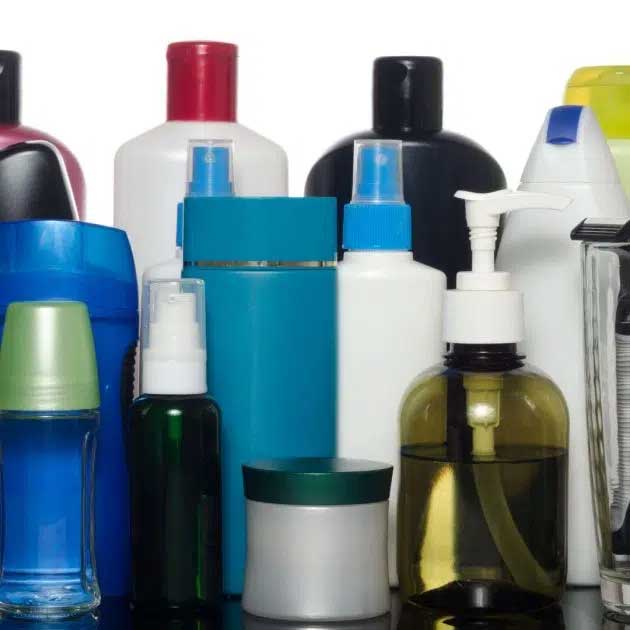INTRODUCTION: PERSONAL CARE PRODUCTS
Today more than ever, you need to evaluate the products you choose to buy — from food, beverages, and supplements to personal care, cleaning products, and clothing/bedding. We need to reduce exposure to ingredients that can challenge our bodies in getting and staying healthy.
While ingredient labels and third-party logos may help us make sense of what’s better quality in our food choices, when it comes to what touches our skin or what we take in from the air around us, it can be so much more confusing to identify those better choices.
Many of these chemicals are non-degradable, which means they stay in our environment, bioaccumulating our bodies, contributing to or even creating health challenges.
If you are working diligently to improve your total nutrition on a daily basis by avoiding processed foods, eating more organic foods, and perhaps even taking targeted supplements, then addressing these toxic exposures is a better next step for your health.
TOP 12 DIRTY PERSONAL CARE PRODUCTS

Personal care products in the US can contain over 1400+ ingredients banned in the EU and other countries. However, only about 30 are banned here in the US so there’s a higher likelihood of consistent exposure to chemicals and residues that may impact YOUR health and ultimately lead to chronic inflammatory conditions like rheumatoid arthritis.
It’s crucial to pay special attention to products that you use every day as these will affect you the most.
- Toothpaste and mouthwash – Choose toothpaste that is free of foaming agents like SLS/SLES, anti-bacterial agents like triclosan, alcohol and artificial flavors, colors, preservatives, etc; organic essential oils/botanicals, charcoal, and coconut are better ingredients. Xylitol may be a beneficial ingredient.
- Face and body moisturizer, creams, and lotions – Choose products that don’t use synthetic fragrances, silicone, parabens, phthalates, etc; plant-based extracts/botanicals are better ingredients.
- Body wash, facial cleanser, bubble baths, and soap – choose products that are free of foaming agents like SLS/SLES, anti-bacterial agents like triclosan, preservatives like parabens, etc; plant-based extracts/botanicals are better ingredients.
- Shampoos, conditioners, and styling products – Choose products that are free of foaming agents like SLS/SLES, anti-bacterial agents like triclosan, preservatives like parabens, and synthetic fragrances, silicone, etc; plant-based extracts/botanicals are better ingredients.
- Hair color – Choose products free of ammonia, PPD, resorcinol, parabens, phthalates, SLS/SLES, titanium dioxide, etc; organic hair color products have slightly better ingredients but this is a difficult category to find something completely non-toxic. Check with your local salons to see what line they use. There are a few companies that use a dye-free, non-toxic, natural treatment that restores gray hair to its natural color and claim good results.
- Make-up – Choose products that are free from parabens, avobenzone, oxybenzone, phthalates, sulfates, synthetic fragrance, phenoxyethanol, dimethicone, petrolatum, PEG, propylene glycol, mineral oil, talc, nanoparticles, as well as metals like lead cadmium and aluminum which are often found in lipstick.
- Deodorant – Choose a deodorant that is aluminum and paraben free; better ingredients include essential oils, coconut oil, shea butter, baking soda, and tapioca/arrowroot powder.
- Hand sanitizer – Choose alcohol-based hand sanitizers that contain simple non-active ingredients such as water, plant-based extracts, and glycerin.
- Bug Spray – Choose DEET-free products; citronella oil, tea tree oil, lemon oil, eucalyptus oil, peppermint oil, cedarwood oil, lemongrass oil, geranium oil, caster oil, thyme oil, rosemary oil & cedarwood oil (which is particularly effective against ticks. Experiment to see what works best with your own body’s chemistry.
- Sunscreen – Choose a sunscreen that is free of oxybenzone, octinoxate, avobenzone, and retinyl palmitate; better ingredients include zinc and titanium oxide with non-nano particles.
- Nail care – Choose a polish that is 3-7 free and a nail polish remover that is acetone free. Skip the “gel” nails and use them for special events only. Look for a local salon that uses better products or bring your own.
- Feminine care products – tampons and pads are often made from cotton and rayon, are chlorine-bleached, and contain synthetic fragrances and pesticides. Did you know tampons are considered a “medical device” so companies don’t have to release what is in them? Opt for chlorine-free, unbleached products made with organic cotton. There are several new options to try like the “silicone cup” but be cautious of the “period panties” because they may contain poly-fluoroalkyl substances (PFAs), a class of toxic chemicals linked to significant health impacts like cancer, reproductive problems, and endocrine disruption.
CONCLUSION
We cannot avoid every chemical out there, but we can start to identify what we are exposed to most often. Then, we can take steps to make the necessary changes. How quickly you make changes may vary depending on your current health status, health goal(s), and resources. But each of us can start to have an impact on our own health and the health of our planet with every better choice we make.
Want to learn more about personal care products? Download my Personal Care Guide to help you make better choices.

